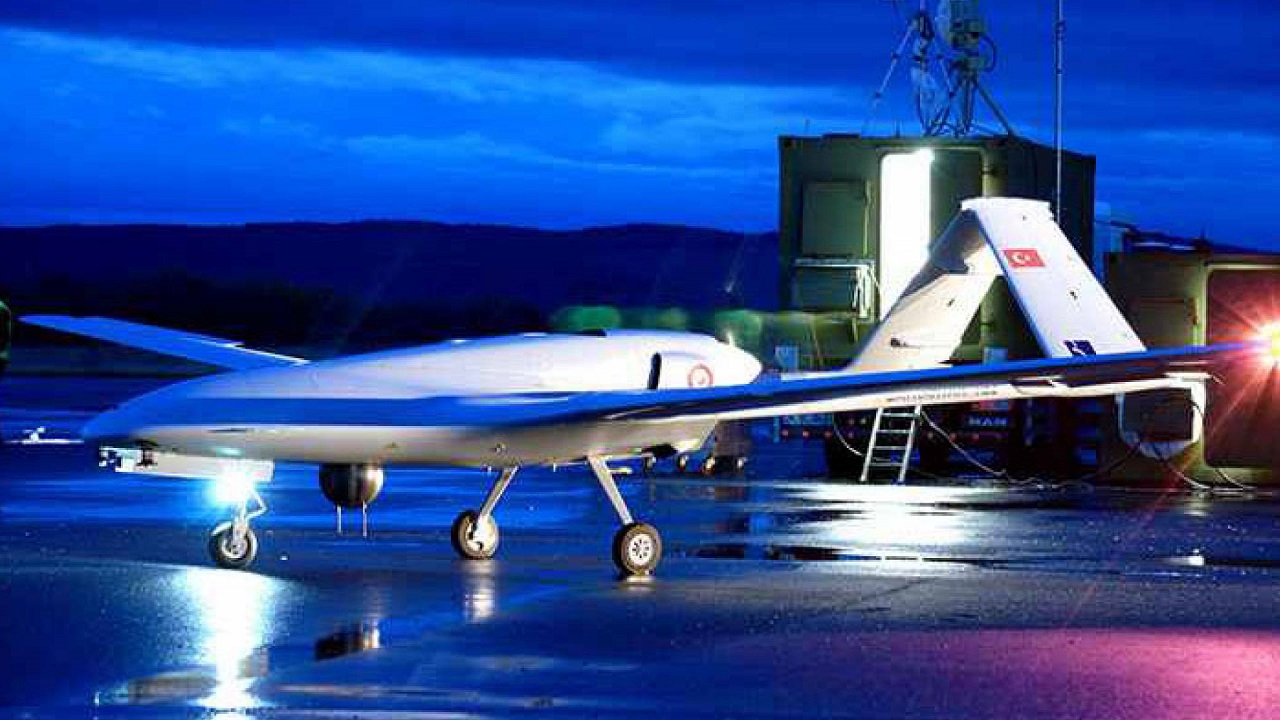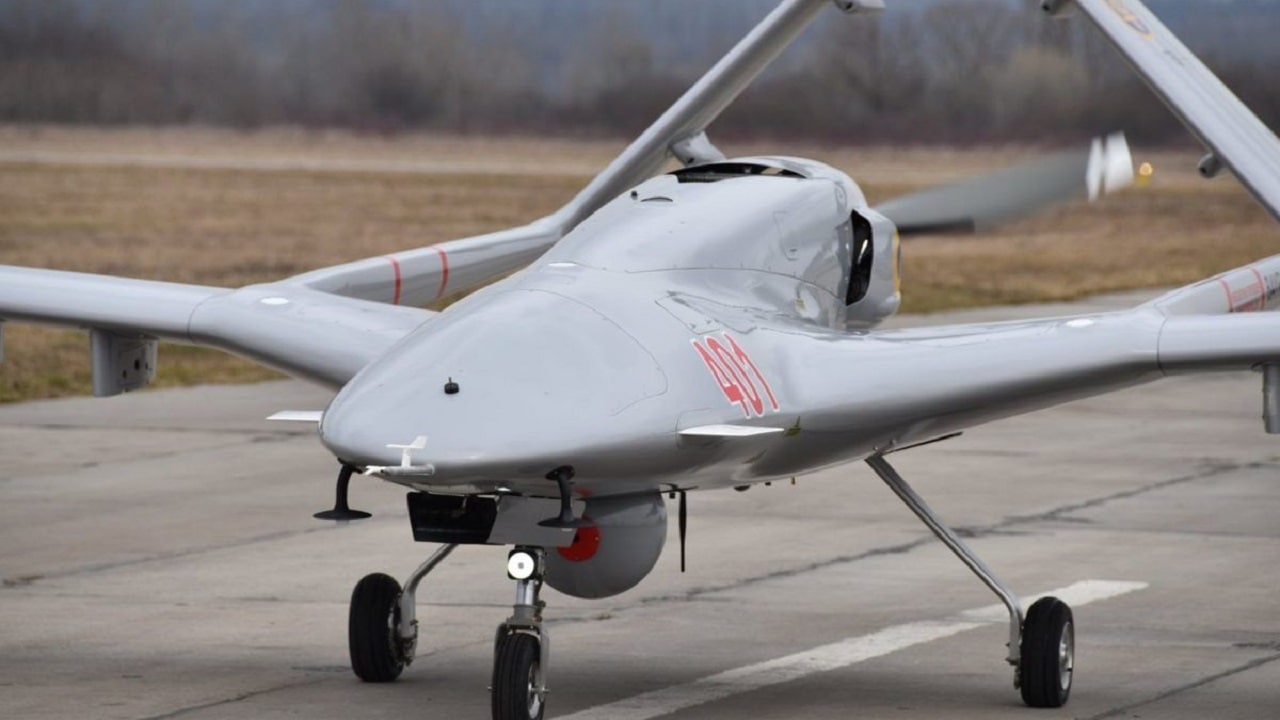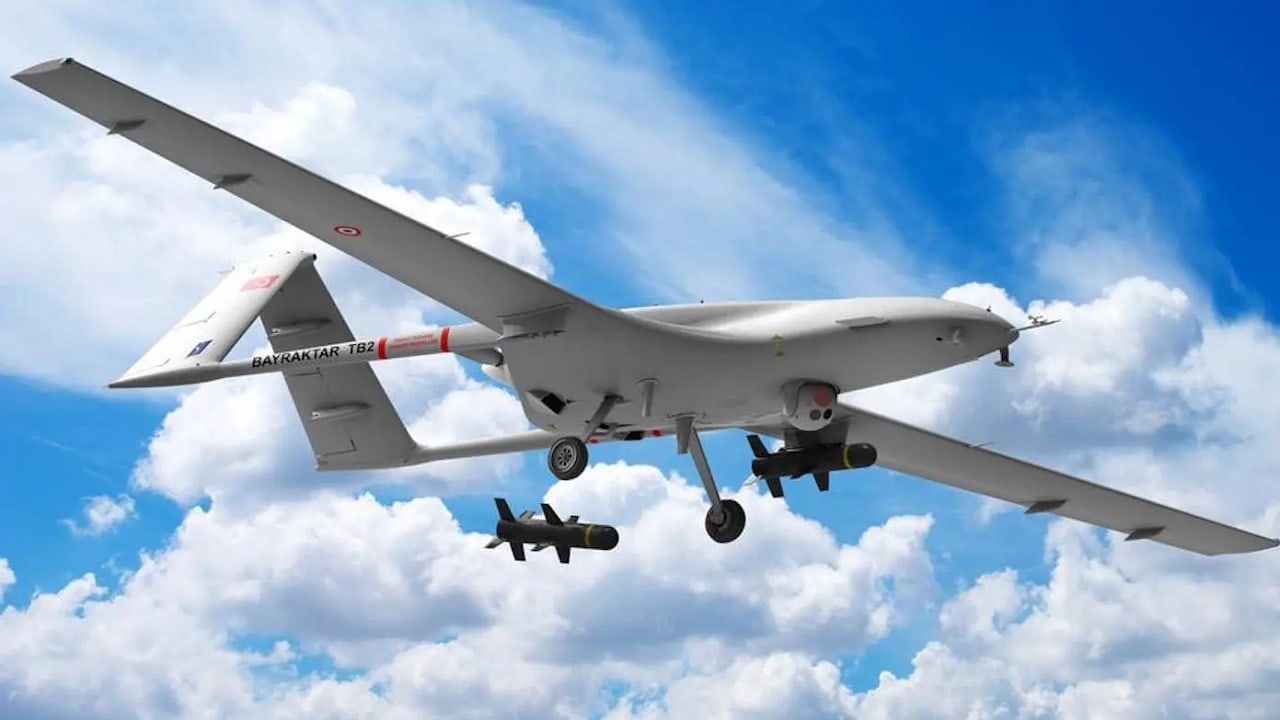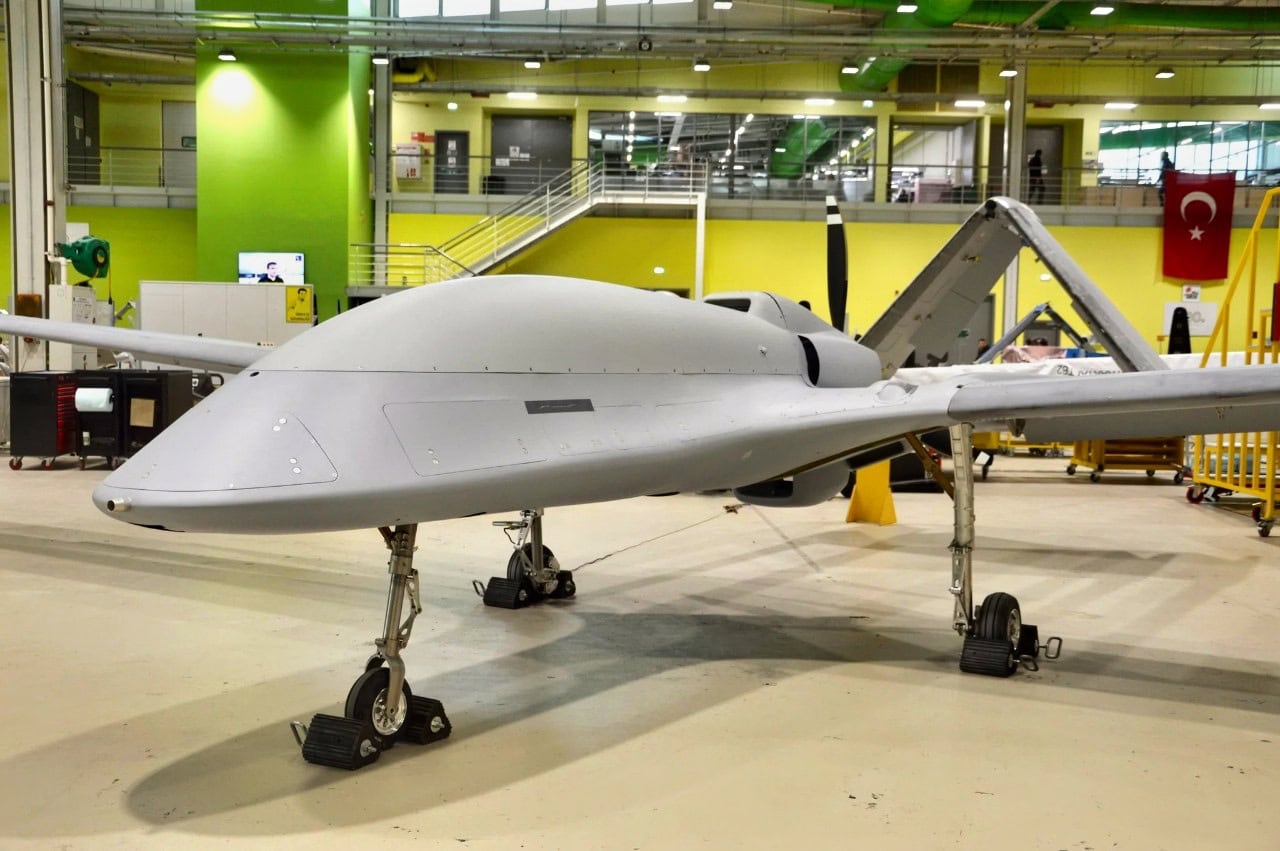Article Summary: Turkey’s Baykar is beginning mass production of its advanced naval TB3 drone, enhancing the globally successful TB2 platform. The TB3 features increased payload capacity, advanced munitions, improved combat range, and foldable wings for carrier operations. Recent successes include a landmark naval launch and initial sales agreements with Indonesia.
-Meanwhile, a new AI-driven TB2 variant, TB2T-AI, aims to offer enhanced autonomy, EW resistance, and higher performance.

TB2 drone similar to the one fighting in Ukraine.
-Baykar’s future ambitions extend to international production facilities and partnerships, including a joint drone development with Italy’s Leonardo Aerospace, underscoring Turkey’s significant growth and innovation in UAV technologies.
Turkey’s New TB3 Drone: A Naval Powerhouse Ready to Change the Battlefield
Turkish drone manufacturer Baykar will soon begin mass production of its new TB3 drone. This latest unmanned aerial vehicle (UAV) is the naval variant of the legendary TB2 that turned the tide of wars in Armenia and Azerbaijan, Ethiopia, Libya, Syria, and Ukraine. TB2s are the world’s most exported drone, with sales to some 34 countries, and they have also assisted rescue workers and firefighters during natural disasters in Turkey and around the world.
Under development since 2020, the TB3 carried out its maiden flight in October 2023, taking off from and landing on the Turkish Navy’s amphibious assault ship TCG Anadolu on Nov. 19, 2024. That flight marked the first time a UAV has launched and landed from a short-runway naval platform.
Baykar’s products, along with Turkish Aerospace Industries’ Anka drones, have turned Turkey into the world’s leading drone exporter by cornering two-thirds of global markets, according to the Center for a New American Security.
The TB3, a newer TB2, and other Baykar platforms such as the Akinci and Kizilelma, will take Turkish drone production to new heights.
How the TB3 built on the TB2
The TB3 is longer, wider, and taller than the TB2, and it can carry heavier payloads than its elder brother: It sports six hardpoints to the TB2’s four.
The payloads on the TB3 are more advanced too. Whereas the original TB2s carried guided micro-munitions made by Turkey’s national rocket and missile manufacturer Roketsan, the TB3 is expected to feature heavier guided missiles and electro-optical pods that will give it a longer combat range.
Because it will serve on a warship, the TB3 also comes with foldable wings.
Although its older brother can still stay aloft longer, the younger TB3, thanks to its much more powerful engine, can fly higher.
The TB3 is already following in the TB2’s footsteps as an export success: During Turkish President Recep Tayyip Erdogan’s recent trip to Southeast Asia, Baykar, whose chairman and chief technology officer, Selcuk Bayraktar, is Erdogan’s son-in-law, signed a deal to sell 60 TB3s to Indonesia.
Baykar (and Turkey) Are Not Done With the TB2
Although it was not the first Turkish drone to take to the skies—that honor belongs to the Anka series—the TB2 is a tried-and-true platform. The first unit joined the Turkish military in 2014. It retired from service last October after completing 10,000 mission hours.
As of December, an estimated 800 to 900 TB2s had logged a total of 1 million flight hours.
But the show’s just starting for TB2. A new variant, the TB2T-AI, took its maiden flight on Feb. 21. As its moniker suggests, this version will feature AI-driven computing that will enable it to operate more independently and to change its planned route in case of contested airspace or adverse weather. It will also perform autonomous landing and take-off.
The TBT2-AI is also likely to be more resistant to electronic jamming, which became a problem in Ukraine after the Russian military deployed electronic warfare (EW) assets to the battlefield. At present, together with Turkey’s military electronics giant Aselsan, Baykar is testing the Antidot-2U/S electronic support pod to counter enemy EW assets.
It is fair to expect that plenty of these features will be added to the TB3 as they mature.
The new TB2 also comes with a more powerful engine and aerodynamic improvements, along with winglets to improve maneuverability, which will help it carry heavier payloads. According to several Turkish commentators, if Aselsan could develop its Murad series of Active Electronically Scanned Array radars for TB2s and TB3s, the drones could launch air-to-air variants of the Sungur short-range air-defense missile to protect friendly forces against drone swarms.
Even older versions of TB2s are being taught new tricks. Last summer, Baykar tested one of its drones doing a barrel roll. This maneuver could allow the unmanned aircraft to avoid antiaircraft fire.
Baykar’s New Frontiers
Baykar is also developing subcomponents to use on the TB2 and TB3, as well as on additional platforms. The company’s Kemankes (“Archer”) series of cruise missiles/loitering munitions are expected to enter service with the Turkish military and allied forces soon.
Similarly, the Kizilelma, billed as the world’s first unmanned fighter jet, is expected to operate from the TCG Anadolu and on Turkey’s much larger aircraft carrier that will enter service in the 2030s.

Bayraktar TB2 Drone of the Ukrainian Air Force.
Meanwhile, Baykar’s twin-turboprop-engine Akinci, already in production and exported to six countries, made headlines by locating the crash site of Iranian President Ebrahim Raisi’s helicopter in May 2024.
To keep up with demand, Baykar is expected to open factories abroad. One in Ukraine is under construction and is likely to open once the war there ends. Similarly, there is talk in Ankara that the company might have to build another plant in Indonesia to keep up with increasing orders from the Asian market.
Thanks to its successes, Baykar acquired Italy’s venerable aviation firm Piaggio Aerospace and initiated talks to jointly develop drones and other platforms with the Rome-based defense and aerospace giant Leonardo.

TB2 Drone. Image Credit: Creative Commons.
About the Author:
Barın Kayaoğlu is an independent analyst and consultant based in Ankara, Türkiye. The opinions expressed in his work and public comments are personal and not shared by his clients, business partners, or relatives. With a Ph.D. in history on U.S. foreign relations and the modern Middle East from The University of Virginia, Kayaoğlu is currently working on his book (based on his doctoral dissertation), “The Global Cold War in Turkey and Iran: U.S. Diplomacy, Authoritarian Development, and Anti-Americanism.” He most recently published the article “Turkey-United States Relations” for the Oxford Research Encyclopedia of American History. You can follow him on www.barinkayaoglu.com, X (Twitter), LinkedIn, YouTube, and Facebook.

